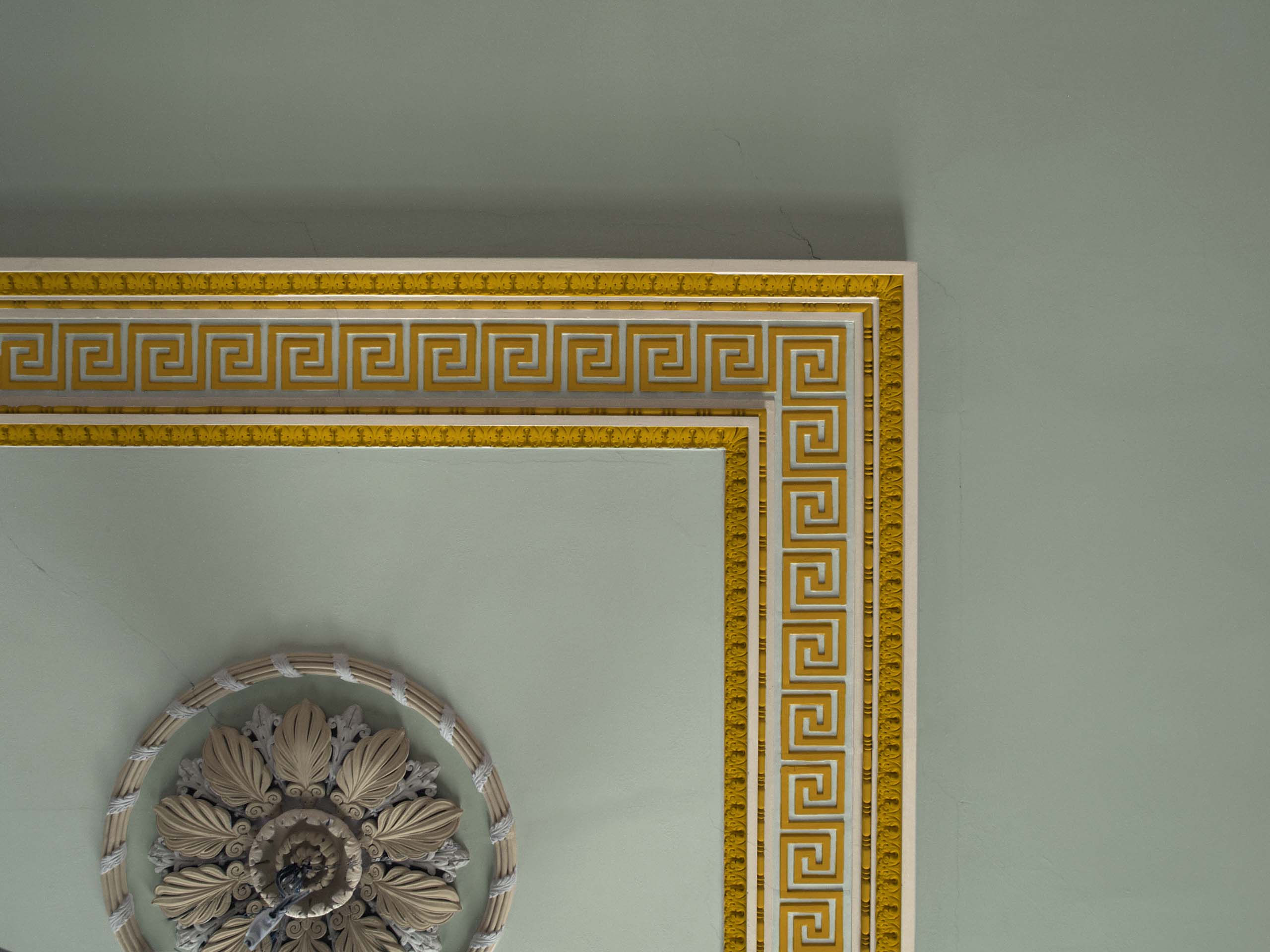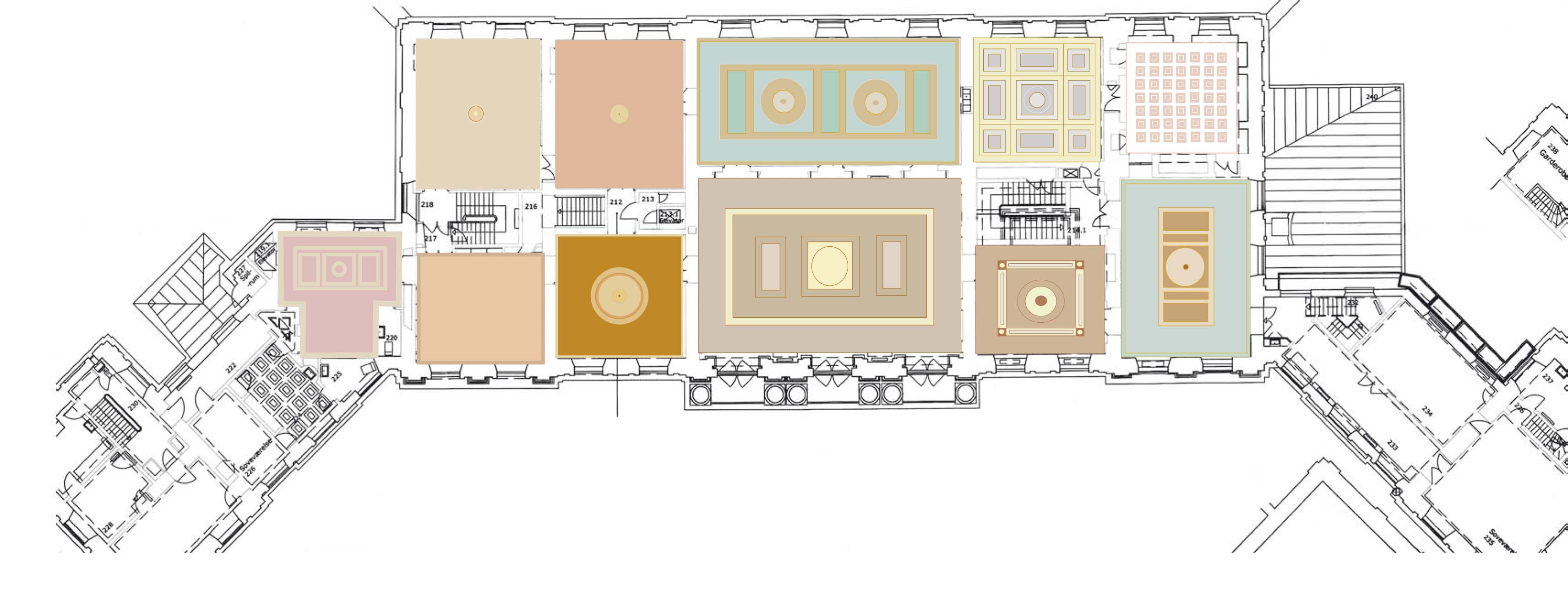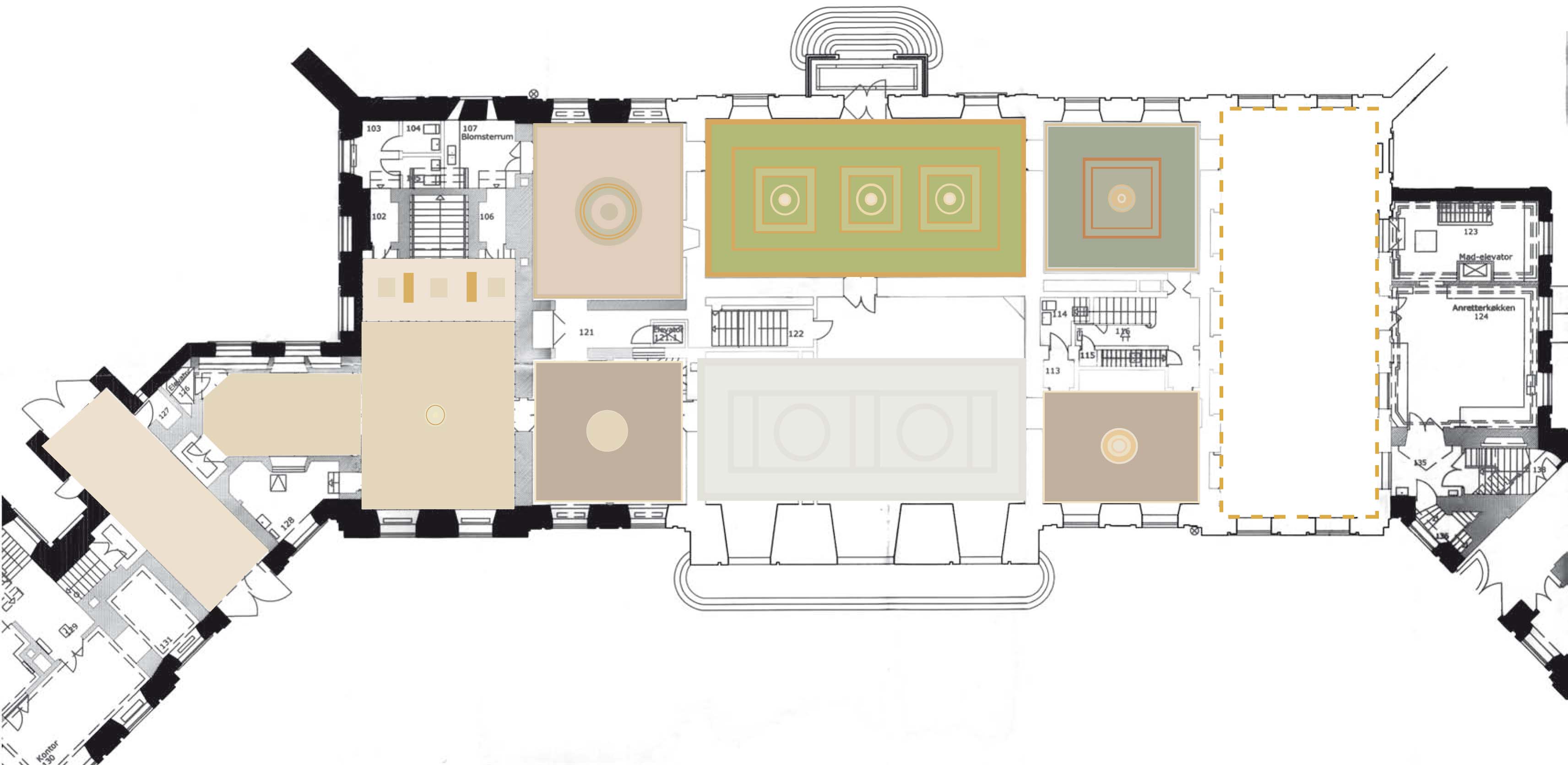Colours and gilding
The gilding work is a chapter in its own right. A particular effect has in fact been achieved because of the way the gilding of the individual decorations has been carried out. In some places the gilding forms a massive element in the decoration, while in others it is just glimpsed as a highlight at the edge of a piece of decoration. The two types of gilding are often combined in the same ceiling.
The gilding is mainly to be found on the ceilings of the piano nobile, while on the ceilings of the ground floor there is a kind of imitation gold in the form of ochre-coloured decorations.

On this ceiling, which belongs to a ground-floor room, there is no gilding, but instead there is painting in “yellow ochre”. The illustration is the conservator’s digital reconstruction.
There are also contrasts between different rooms on the same storey. The ceilings in the rooms that face northeast are painted with cool colours, whereas the southwest facing rooms are painted with warmer shades.
On all the ceilings schemes of complementary and contrasting colours have been experimented with. The large coloured areas have different functions in the various ceilings. In some places there are light and dark, or cold and warm, areas adjacent to each other to create a balance in the ceiling – while in other places the areas are painted in such a way as to underline differences.
 The ground plan of the piano nobile, with the colours of the ceilings indicated. The ground plan shows the colours that were painted on the ceilings in 2009-10. These are for the most part the colours that the conservators found during the investigation -with just a few exceptions.
The ground plan of the piano nobile, with the colours of the ceilings indicated. The ground plan shows the colours that were painted on the ceilings in 2009-10. These are for the most part the colours that the conservators found during the investigation -with just a few exceptions.
One point of interest is the colour scheme of the rosettes surrounding the points from which the chandeliers were meant to hang. Most of these were paler than the rest of the ceiling – often yellow – as if they were intended to highlight the placing of the lights.
And the number of colours increases as one goes nearer to the centre of the ceiling. Typically the colour scheme of the decoration on the cornices is reduced to one or two colours, while the central rosettes consist of many colours. This can most clearly be seen in the large, very richly decorated ceilings such as that in the Great Hall.

The plan of the ground floor with the colours that were painted on the ceilings in 2009-10. In the facade rooms of the palace the colours have been adjusted to the art works that have been created there, while the colours on the garden side are those found during the colour-archaeological investigation.
 Dansk
Dansk
 English
English
 Deutsch
Deutsch
